2024 is a big year for transport in Paris. Between April and June, four major extensions opened. I visited some of these in the early summer, and will share my thoughts over the next few articles.
In May, RER line E was extended westwards. It was a smaller-scale extension than was initially planned for 2024, and with a very partial service. But the stations themselves are truly spectacular.
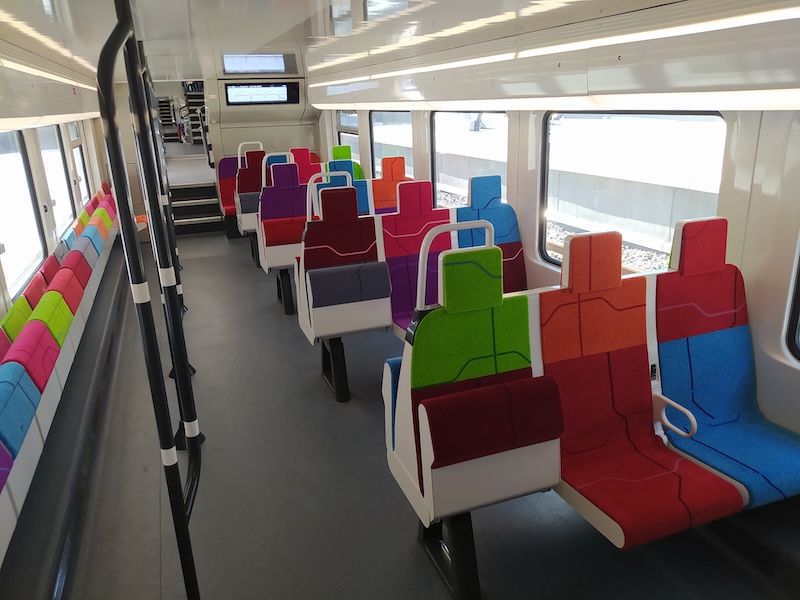
The beginning
Paris has had railways for almost two centuries, and a metro system since the 1900s. But in 1977, an entirely new form of rail transport was born: the RER. Standing for “réseau express régional” – “regional express network” – it’s a sort of hybrid between rapid transit and suburban rail. The concept is simple: connect pre-existing suburban lines to the city centre with a central tunnel. It’s proven incredibly powerful, with its five lines serving almost a billion passengers between them each year. Lines A and B are Europe’s busiest railways.
By the mid-1990s, there were four lines: the A running east-west, the B and D running north-south, and the C doing its own notoriously complicated thing. But the region needed another east-west link, particularly for journeys between the Gare du Nord and the central business district around Saint-Lazare. This new line, first announced in 1989, was codenamed “Éole”. It stands for “est-ouest liaison express” – “east-west express link” – but it’s also a name from Greek mythology (the French form of Aeolus).

Éole began life in 1999 as the RER E. But unlike the other lines of the RER network, it was lopsided: it only connected the eastern suburbs with new stations at the Gare du Nord (Magenta) and Saint-Lazare (Haussmann – Saint-Lazare). These cathedralesque caverns are truly beautiful, and have remained so for a quarter of a century; but they were never intended to be the end of the story.
After much delay, including uncertainty about the route, 2024 was meant to be the year the full extension to Mantes-la-Jolie opened. In the event, only the section to Nanterre – La Folie, a brand-new station in a major suburb just west of La Défense, is now operational. For the time being, it’s running as a shuttle, detached from the line’s main operations. And because of a lack of space to turn trains around in the central stations during rush hour, the shuttle is only running in the off-peak. But passengers can now visit the extension’s three spectacular new stations.
Through services from Nanterre to the eastern suburbs will begin on 15 December.


Empty but awe-inspiring
Running only in the off-peak, even a relatively low frequency of four trains per hour seems like overkill. When I visited on a Sunday afternoon, the stations and the trains were almost empty. And the sense of emptiness was enhanced by the stations’ vastness.
I started at the western end, a short walk from the existing Nanterre – Préfecture station on line A. Nanterre – La Folie is nestled between office buildings: this area is within the orbit of the huge business district of La Défense. It’s a stylish, if unassuming, station. The bank of ticket gates shows that it’s dimensioned for much larger numbers than it’s getting now. It needs to be ready for peak service, not only to welcome through trains from the eastern suburbs, but also services from the west once they launch in the latter half of the decade.


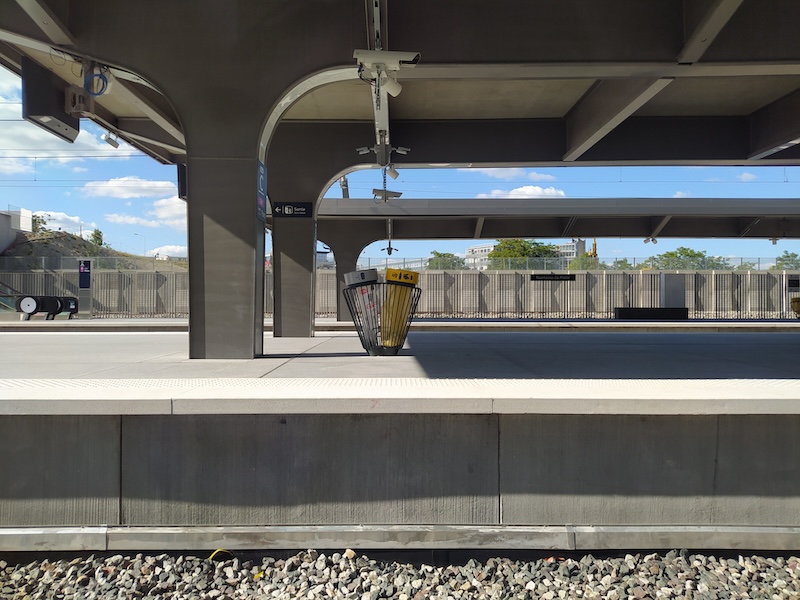
La Défense
A little east of the provisional terminus, trains dip underground into a new tunnel. At La Défense, already a major transport hub, a vast station hall has been dug underneath the Cnit shopping centre. It’s incredible they found the space in this crowded underground environment, already home to so many rail and road tunnels and the foundations of France’s highest skyscrapers. Much of the sense of space has been achieved with the vertical dimension – I almost regret using the term “cathedralesque” for the central stations, because I can’t find a better word here – but the horizontal footprint is also sizeable.
I alighted here, intending to spend 15 minutes looking around before taking the next train east. If what took my breath away was the scale, I found plenty of other nice touches. The combination of wood and exposed concrete is reminiscent of the line’s original underground stations opened in the 1990s. But it doesn’t feel stale or derivative. This is a thoroughly modern station.
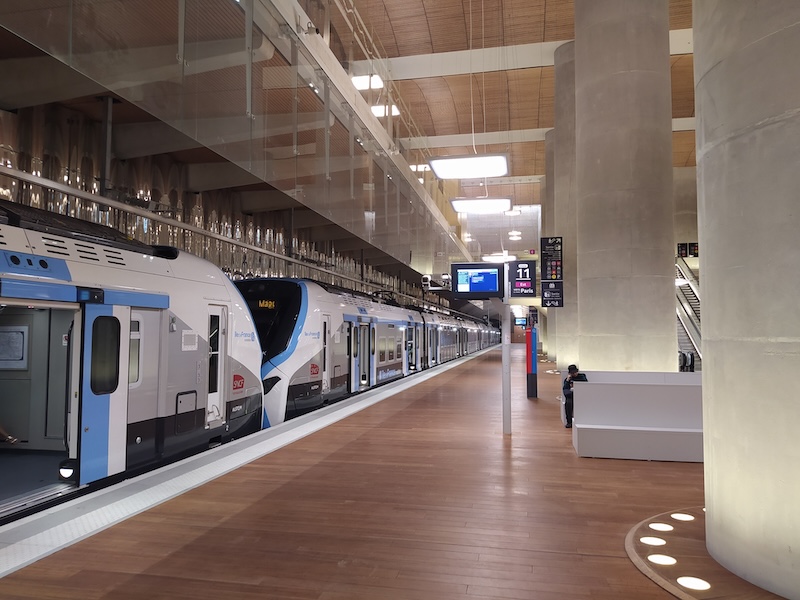
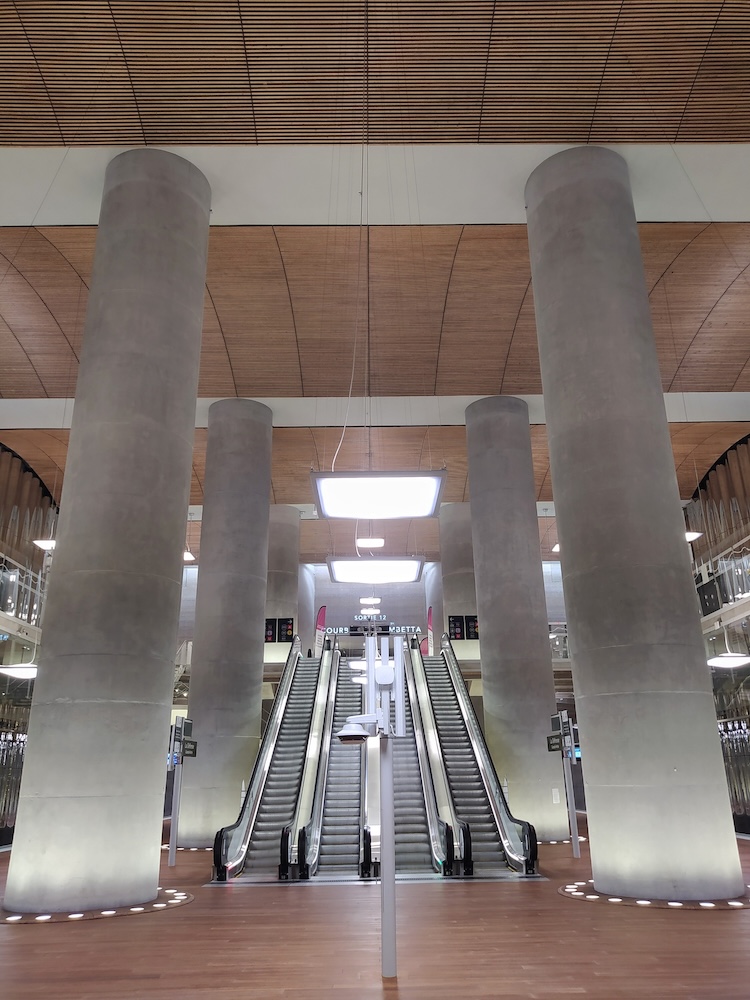
On a mezzanine, I found a pair of functional, self-cleaning toilets, accessible by scanning a transport pass or ticket. Too few stations provide such facilities, which, as transport expert Reece Martin has pointed out, are an important accessibility feature. Let’s hope they’re well looked after: there’s a similar offering at Haussmann, but it’s been out of order every time I’ve passed.

Five minutes before my train was due to arrive, an announcement informed waiting passengers that it had been held up at Nanterre thanks to a technical issue. I suppose it was sensible to separate the extension from the rest of the line while they ironed such matters out. Unsure how long I’d have to wait, I opted to travel to the next station by another route. Line 1 of the metro also connects La Défense with Porte Maillot, with a couple of intermediate stops. This change of plans allowed me to test out the connection.
The walk to line A is remarkably straightforward, thanks to a passenger tunnel whose white panelling reminds me vaguely of London’s Elizabeth line. A short walk further (mostly upwards) connects to the terminus of line 1.

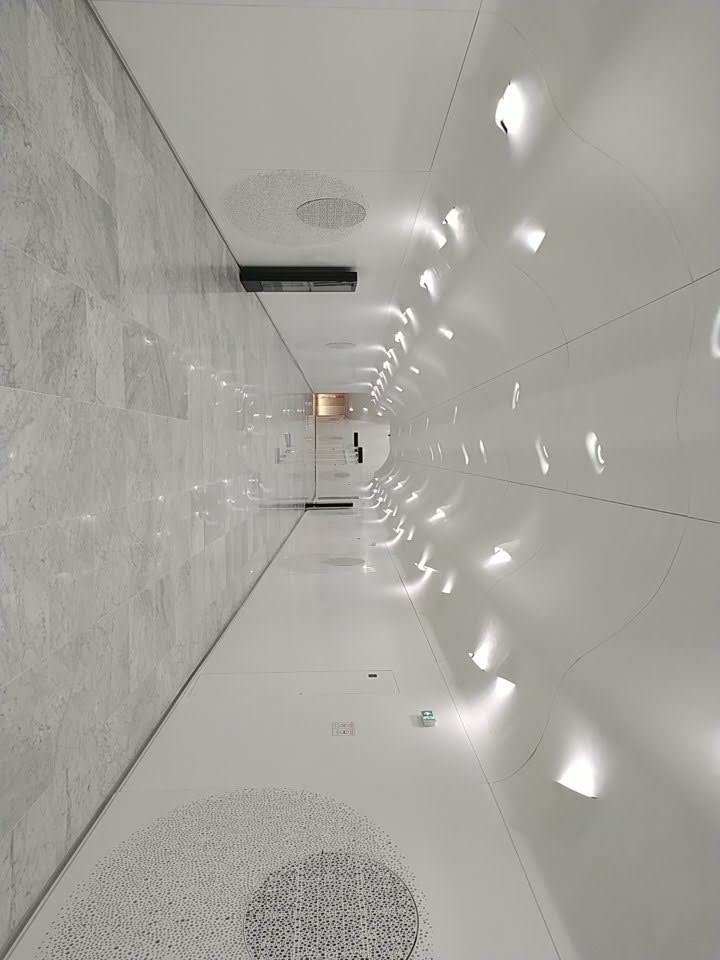
Neuilly – Porte Maillot
After getting off at Porte Maillot, I was unable to make the underground connection to the RER. A passenger tunnel had been constructed, but hadn’t opened yet. Instead, I exited the metro onto the plaza before descending into the new station.
Porte Maillot, a major road intersection at the edge of Paris, was already home to the metro and a branch of RER line C. The main draw is the Palais des Congrès, a convention centre, performance venue and shopping mall. This year, the location welcomed two new rail links. Tramway line 3b arrived here in April, and in May, the RER E station opened.

The new hub is a great example of a holistic approach to transport and urban development. To welcome the tramway and the new station, the entire plaza was reimagined from a nightmarish roundabout to something more manageable for visitors on foot. The Palais’s entire forecourt, once a dropoff point for cars, is now pedestrianised, with a lot of new vegetation to boot. Flanking the picture are two new entrance buildings, each housing a set of escalators heading underground. Between them, a stretch of the esplanade is paved with glass.
I stepped into one of the entrances and onto a crawling escalator, which sped up when it sensed my presence, carrying me deep under the street. Stepping into the underground space, I understood that glass paving: although the platforms are deep below the ground, they are bathed in natural light. Once again, the wood and cream-coloured concrete reminded me of Haussmann and Magenta. This time, I also spotted a resemblance in the hanging lights. The overall colour was different thanks to the penetrating sunshine, but we were still a world away from the cold white light of most of the metro.
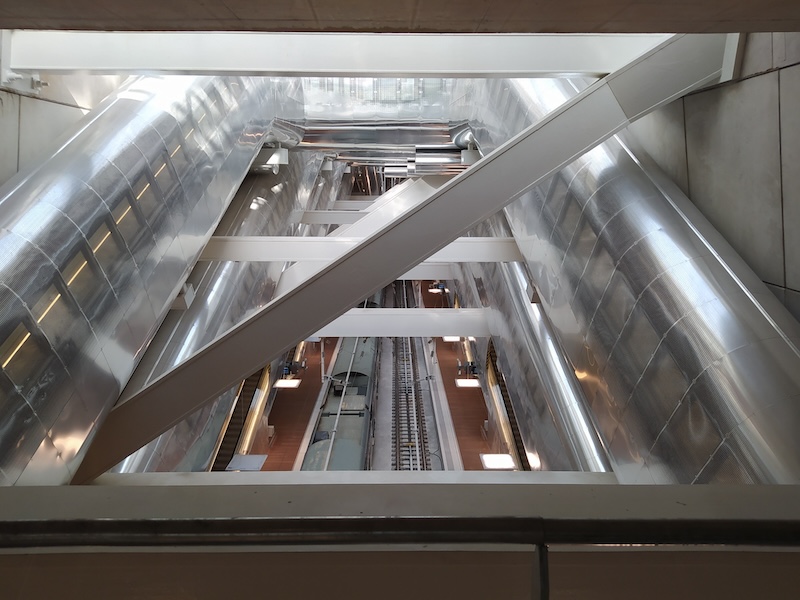
The escalator shafts visible from the platforms are vaguely reminiscent of the Centre Georges Pompidou or Terminal 1 of Charles de Gaulle airport. My overall impression, as at La Défense, was of something clean and polished, yet with no shortage of flair.
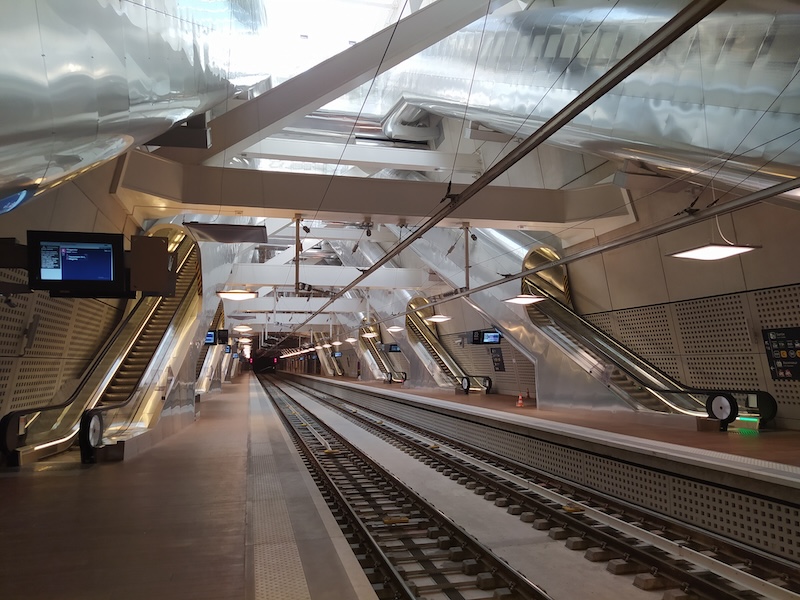

Whatever the technical problem was, it must have been resolved quickly enough. Satisfied with my visit, I boarded the next train east to Magenta to continue my journey of discovery with a look at the extension to metro line 11. I’ll tell you all about that next time.
 Fabric of Paris
Fabric of Paris